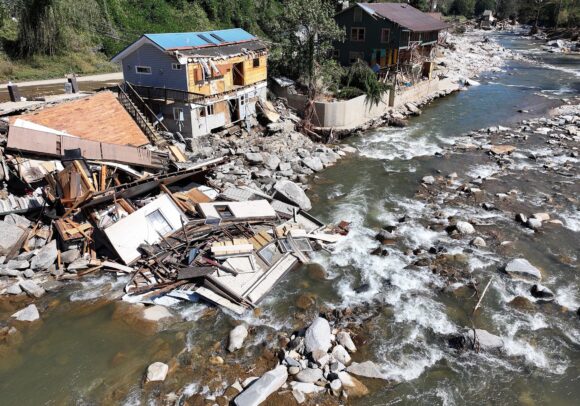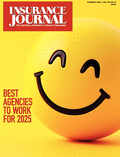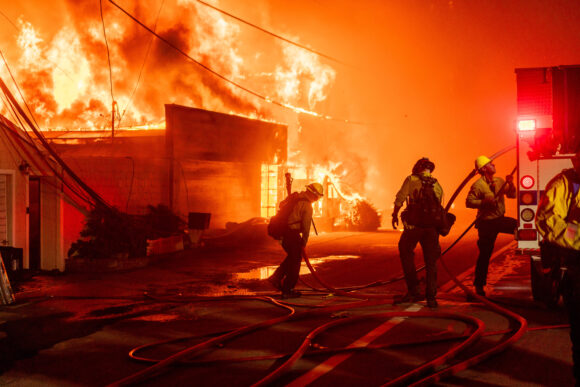The Federal Reserve’s former top-ranking official overseeing climate risk says the US economy faces a series of long-term, structural shocks as a result of increasingly extreme weather patterns.
Kevin Stiroh, who left the Fed earlier this year after it wound down large parts of its work on monitoring how global warming is impacting financial stability, said banks should expect to see the fallout “materialize” in balance sheets and income statements.
“Climate-related shocks are likely to be wide reaching and secular, rather than narrow and cyclical,” Stiroh said in an interview. “There’s a long-term trend, certainly on the physical risk side, that could impact bank business models.”
Despite those risks, banks and investors have yet to properly map out how climate-related losses will be distributed, Stiroh said. Those at risk include homeowners, banks, insurers and the holders of securitized financial instruments, he said.
Under President Donald Trump, the US has ceased monitoring many of the data points that would help the finance industry prepare for the climate risks ahead. Without that data, banks and investors risk allocating capital in ways that don’t reflect the potential future losses associated with extreme weather events.
“If you think about any sort of natural disaster, whether it’s the hurricanes in North Carolina last year or the wildfires in California, these have massive damages,” Stiroh said. “But the really difficult question is, who ultimately bears those losses?”

Figuring out how those shocks ripple through the economy is “one of the most critical questions for effective risk management, and then ultimately any policy responses,” he said.
The Fed appointed Stiroh to a leadership role with the Board of Governors on climate risk in 2021. But the US central bank has since taken major steps to deprioritize work on assessing the threats that global warming poses to financial stability. Earlier this year, the Fed disbanded its Supervision Climate Committee, which was chaired by Stiroh, along with other internal climate groups.
The Fed also has taken efforts to downplay the need to make climate risks a focus of global financial rules. That includes a largely successful campaign to pressure the Basel Committee on Banking Supervision to water down its climate program, Bloomberg has previously reported.
The development has led to divisions in how financial supervision is handled in the US, where Trump has called the very idea of climate change a “con job,” compared with other parts of the world. In Europe, for example, policymakers require banks to monitor climate risks, with the European Central Bank recently noting that mortgage portfolios are in particular need of attention.
A spokesperson for the Fed declined to comment.
In a speech delivered on Oct. 1, ECB Executive Board Member Frank Elderson went so far as to say that “in the next five years, extreme weather events could put up to 5% of euro-area economic output at risk,” which “would be a shock similar in magnitude to the great financial crisis.”
Related: Study Finds World Is Far More Ablaze Now With Damaging Fires Than in 1980s
Stiroh, who didn’t comment on the Fed’s policies, said climate-related issues have “distinctive attributes that require additional focus” from banks and supervisors. At the same time, climate-related shocks “are drivers of risk, not an independent risk stripe,” and so they “can manifest in very traditional risks,” such as credit, market and operational risks, he said.
Against that backdrop, Stiroh said current approaches to financial risk management are likely to be inadequate. “The past is unlikely to be a good predictor of how these shocks will materialize in the future,” he said. Banks will “likely need new tools, new data, new expertise to effectively manage these risks.”
Outside US policymaking, there’s a growing body of research on the impacts of climate change on financial stability. Fitch Ratings warned last year that the share of rated corporate issuers exposed to downgrades as a result of increasing climate-related risks may be as high as 20%. The ratings company said fossil fuels and mining — sectors singled out for support by the Trump administration — will be “particularly vulnerable” to climate risk.
Insured losses tied to natural catastrophes now regularly exceed previous norms and are set to soar to $145 billion this year, the Swiss Re Institute has estimated. It also warned that the risk of “peak” loss years is growing, referring to events that can result in insured losses of about $300 billion in a single year.
Stiroh, who also represented the Fed on climate topics at the Basel Committee — where he co-chaired the Task Force on Climate-related Financial Risks — is continuing to study the fallout of global warming on the financial sector. He joined the think tank Resources for the Future as a senior fellow in September, and is part of the Climate-related Financial and Macroeconomic Risk Initiative, a collaboration between RFF and the Salata Institute for Climate and Sustainability at Harvard University.
Climate change is no longer an abstract concern that will only make itself felt in the coming decades, Stiroh said, but rather something that’s now “playing out in real time.”
Top Photo: Firefighters battle flames during the Palisades Fire in the Pacific Palisades neighborhood of Los Angeles in January. (Kyle Grillot/Bloomberg)
Was this article valuable?
Here are more articles you may enjoy.



 Florida Reforms Are Truly Making a Difference, Gallagher Re Report Finds
Florida Reforms Are Truly Making a Difference, Gallagher Re Report Finds  The LA Fires Destroyed 11,000 Homes. Less Than 10% Have Permits to Rebuild
The LA Fires Destroyed 11,000 Homes. Less Than 10% Have Permits to Rebuild  IBHS Study Shows Smaller Hail May Be More Damaging to Roofs Than Once Believed
IBHS Study Shows Smaller Hail May Be More Damaging to Roofs Than Once Believed  Acrisure to Lay Off 400 Employees, Citing Tech Advancements and AI Integration
Acrisure to Lay Off 400 Employees, Citing Tech Advancements and AI Integration 

